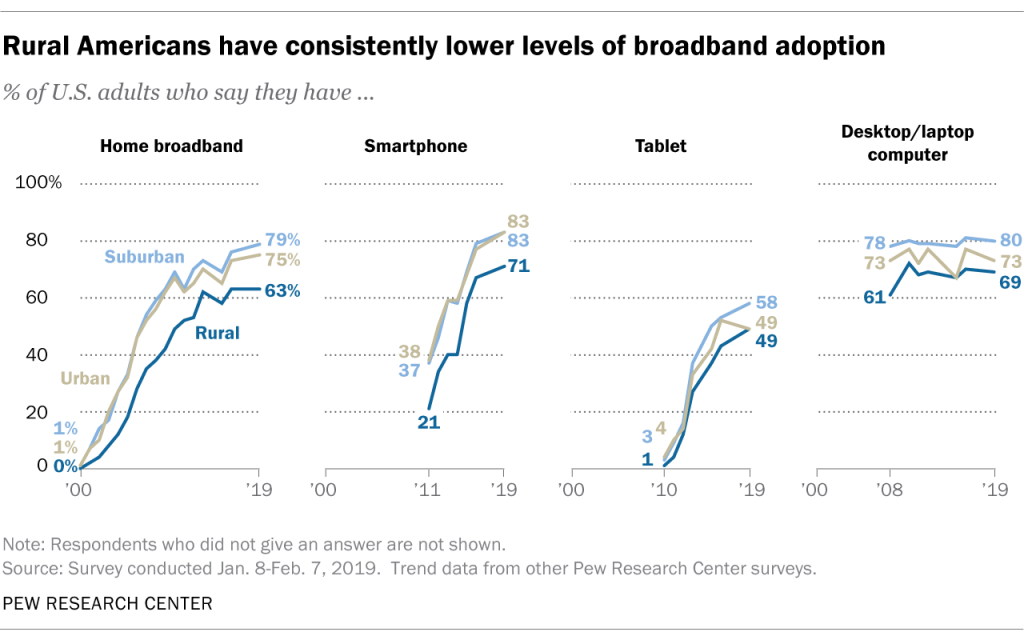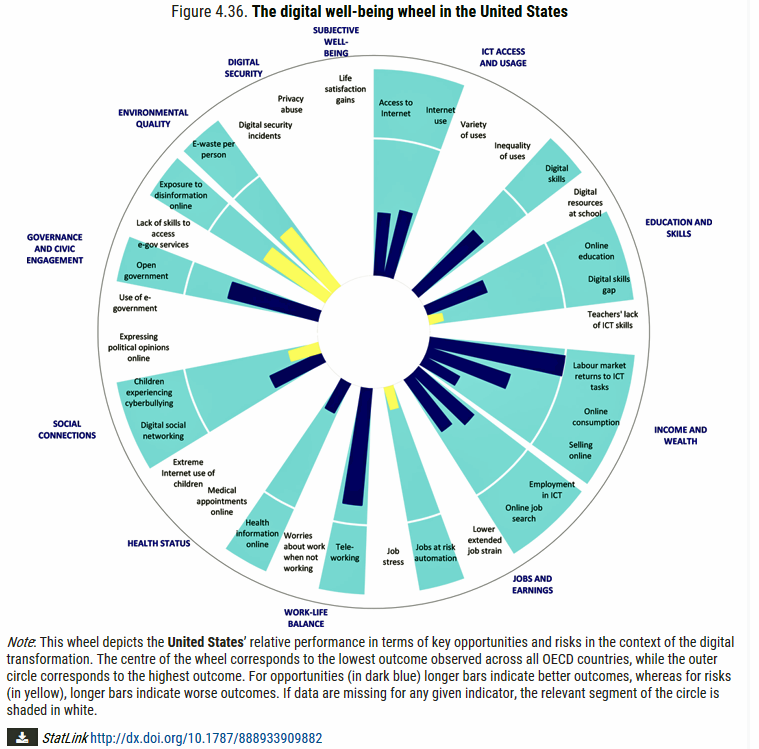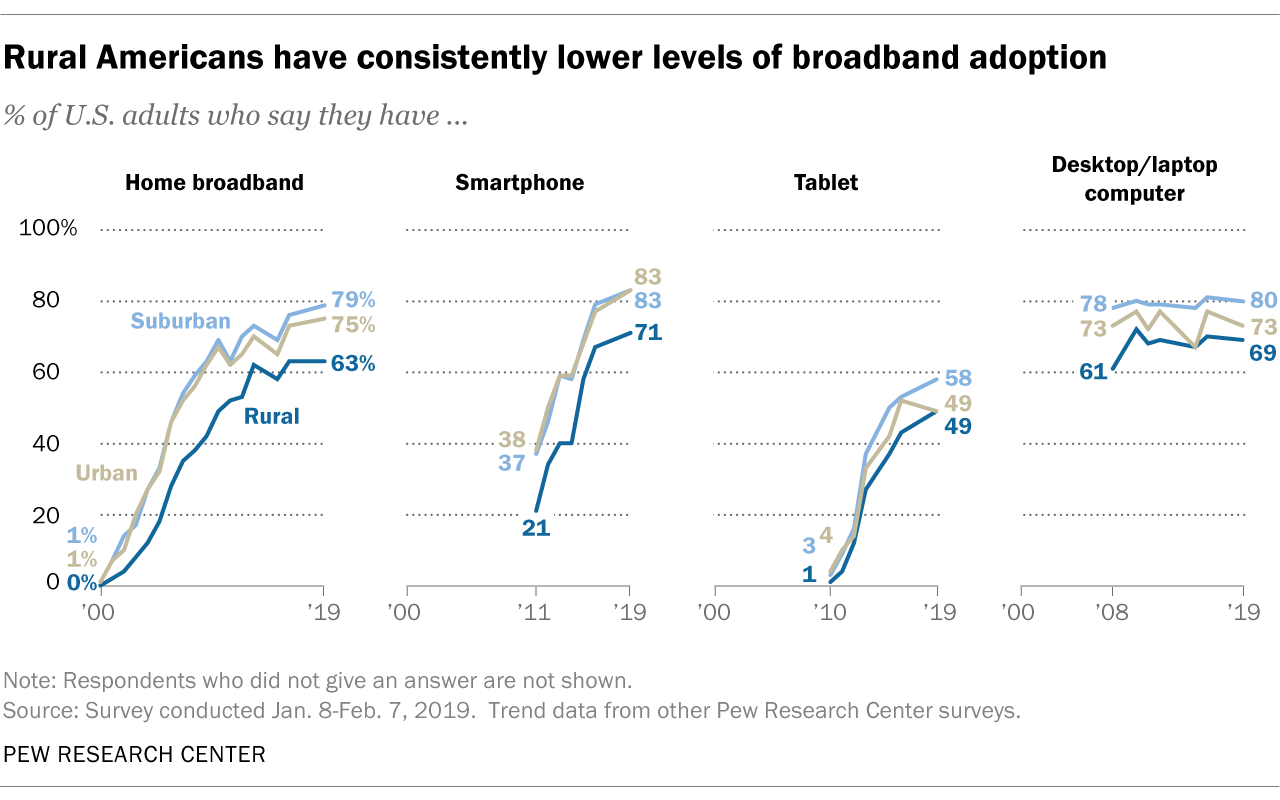
In the U.S., rural residents’ access to broadband at home continues to lag behind urban and suburban dwellers, the Pew Research Group noted in a May 2019 research note on Americans’ use of technology.
The Pew survey explored Americans’ adoption of technology and found that rural dwellers are also less likely to have multiple devices than non-rural consumers. Across the four types of tech studied, it’s smartphones that top the list of penetration in rural areas (at 71%), closely followed by computers (desktop or laptop, with 69% adoption), broadband (at 63%) and tablets in fourth/last place (49%).
The chart illustrates that rural residents’ adoption of broadband and computers has remained flat over the past couple of years, with faster-paced growth for smartphones and tablets.
Health Populi’s Hot Points: There’s a new social determinant of health in town, and it’s broadband connectivity.

Without access to broadband, an individual can’t seek a job online, get banked, apply for health insurance, or access a health information portal, among many other daily tasks EveryWoman and EveryMan do to streamline life.
The lack of broadband to rural health citizens exacerbates disparities by preventing people from digital engagement in their health and caring for loved ones.
Consider the importance of national infrastructure investment for broadband to the last person, not just to the “last mile.” Furthermore, net neutrality is also an important underpinning for fast health care connections that deliver access to telehealth and virtual health channels that can scale care to under-served people, patients, and caregivers.





 I am so grateful to Tom Lawry for asking me to pen the foreword for his book, Health Care Nation,
I am so grateful to Tom Lawry for asking me to pen the foreword for his book, Health Care Nation,  I love sharing perspectives on what's shaping the future of health care, and appreciate the opportunity to be collaborating once again with Duke Corporate Education and a global client on 6th May. We'll be addressing some key pillars to consider in scenario planning such as growing consumerism in health care, technology (from AI to telehealth), climate change, and trust -- the key enabler for health engagement or dis-engagement and mis-information. I'm grateful to be affiliated with the corporate education provider
I love sharing perspectives on what's shaping the future of health care, and appreciate the opportunity to be collaborating once again with Duke Corporate Education and a global client on 6th May. We'll be addressing some key pillars to consider in scenario planning such as growing consumerism in health care, technology (from AI to telehealth), climate change, and trust -- the key enabler for health engagement or dis-engagement and mis-information. I'm grateful to be affiliated with the corporate education provider  Thank you FeedSpot for
Thank you FeedSpot for